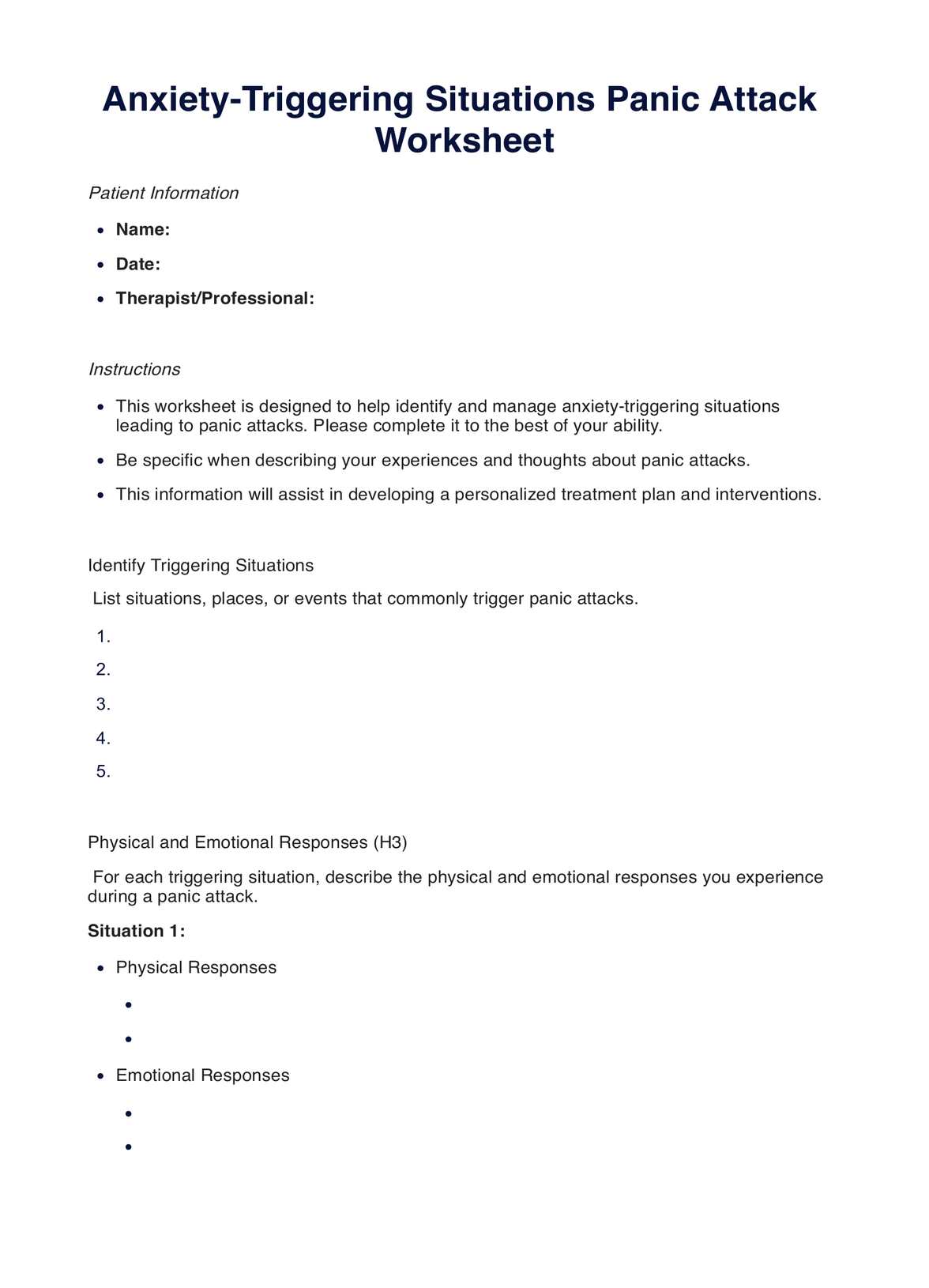The time to complete the worksheet varies but typically takes 15-30 minutes, depending on the depth of reflection and analysis.

Anxiety-Triggering Situations Panic Attack Worksheet
Discover the power of the Anxiety-Triggering Situations Panic Attack Worksheet for managing anxiety and panic attacks. Download the PDF now.
Use Template
Anxiety-Triggering Situations Panic Attack Worksheet Template
Commonly asked questions
This worksheet helps individuals identify panic triggers, develop coping strategies, and provides insights for therapists to tailor treatment plans.
It's best used during or after a panic attack, before therapy sessions, and in support group meetings to foster shared learning and support.
EHR and practice management software
Get started for free
*No credit card required
Free
$0/usd
Unlimited clients
Telehealth
1GB of storage
Client portal text
Automated billing and online payments











